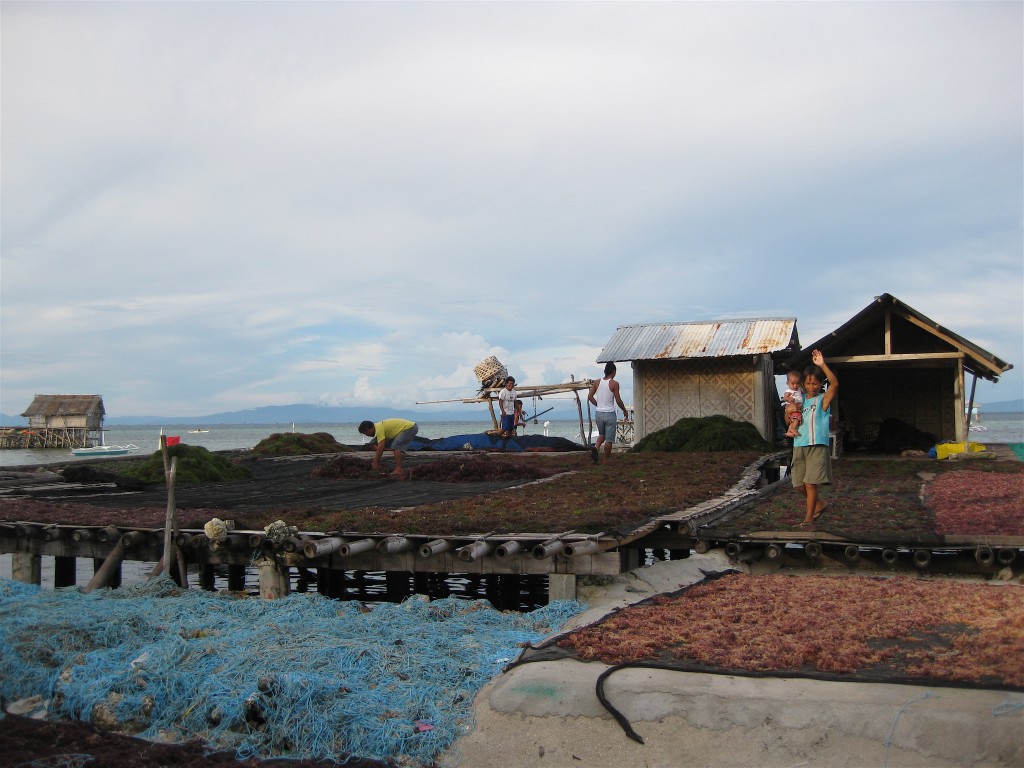Editor’s note: This post is the third installment of Climate and the Coast, Angela Whitney’s summer blog about her research on fishing communities in the Philippines. Click here to read the first entry, and here to read the second.
You’ve probably eaten it, used it for walking, or taken it along with your morning vitamins. Since arriving at my final research site, I’ve learned that there are countless uses for the seaweed species Spinosum.
When I stepped off the boat in Hingotanan, a bustling little island of seaweed farmers, I thought that the enormous piles of seaweed all around me were evidence of Filipinos’ love for heaping bowls of fresh seaweed doused in vinegar with chili and onions, a dish I had been served on numerous occasions. As it turns out, however, fresh seaweed sold for consumption makes up only a small portion of the market. Instead, most of it is sold dried, to be used in products ranging from flip-flops to soft gel capsules.
Walking through the sandy streets of this farming community, which lies several miles off the north coast of Bohol, it is impossible not to tread upon the drying green, brown, and red fronds of the plant. Its smell, too, is inescapable: sometimes a pleasant, salt-tinged odor, but more often a pungent aroma of decay.
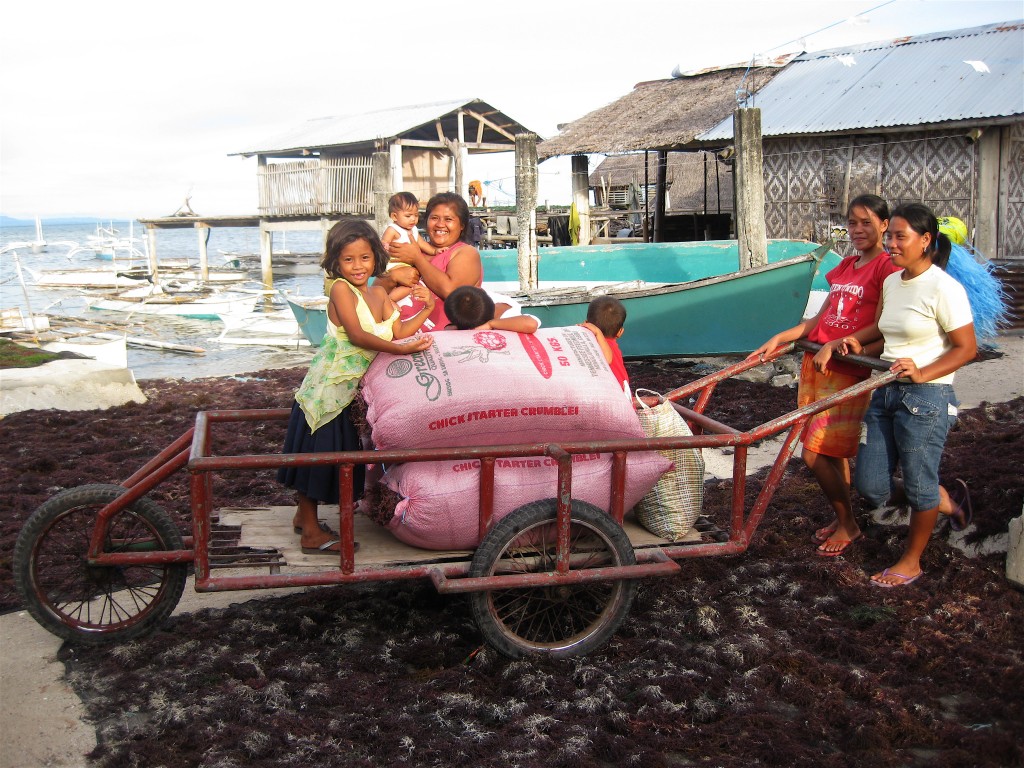
There are baskets, tarps, sacks, boats and houses brimming with Spinosum. And according to my respondents yields are impressive — most farmers harvest several thousand kilos every month or two. Dried seaweed can be sold for about 30 pesos per kilo (or a little under $1), so this remote island industry can be quite lucrative.
But not everyone is doing well financially. There are farmers who don’t have enough capital to expand their operations and so are tied into farming small plots, which yield little harvest. Seasonal and unexpected strong winds and heavy rains can wash out the seaweed, and rot, caused by hot weather followed by heavy rains, often ruins crops. Green algae may smother the seaweed, 0r fish may devour it. In all, there are a host of reasons that a crop might fail.
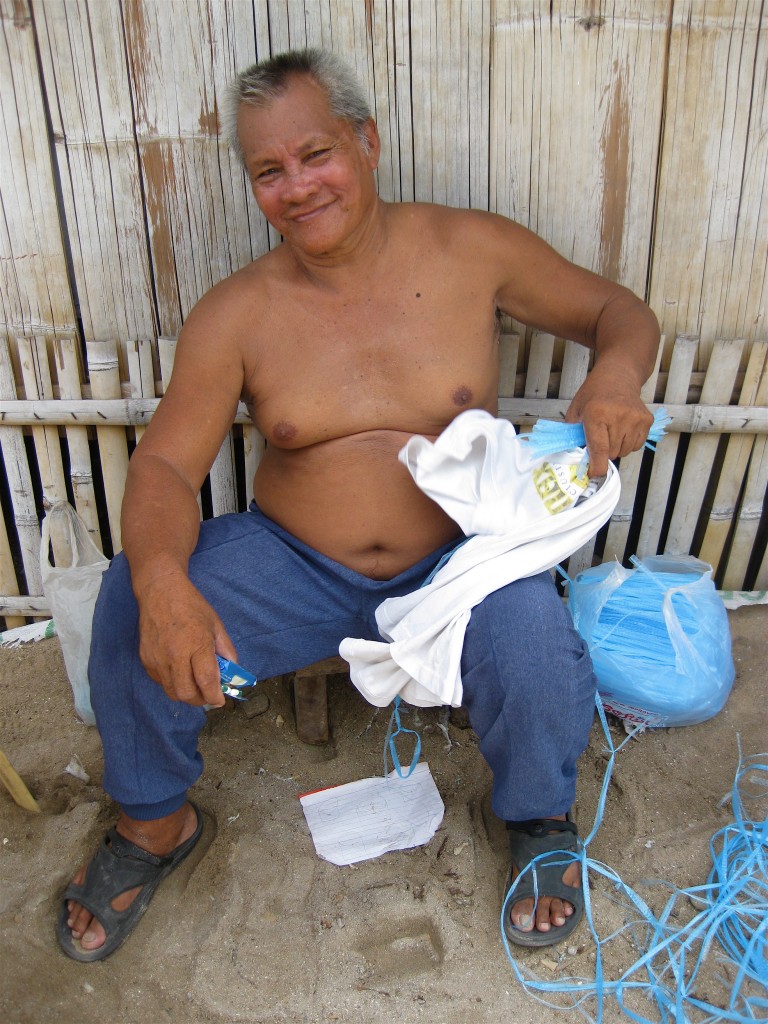
Some farmers can only afford to plant when they are paid up front for the seedlings and materials, and so must constantly search for a buyer in order to make a living. The farming community also includes laborers who don’t own any of their own equipment and work on other people’s farms, earning significantly less then the proprietors. Finally, there are gleaners: people who take advantage of the fact that much of the seaweed “washes out” by gathering it from the rocks and shore.
Most of the farmers we talked to, whether or not they owned well-established farms, engaged in gleaning. When we asked farmers how they were affected by storms, they often said bad weather has advantages and disadvantages. They would chuckle and say that, while on the one hand storms can devastate a crop by ripping the lines from posts in the sand and carrying them off, the upside is that other farmers’ seaweed also falls to the same fait, providing lots of “wash-out” to collect.
***
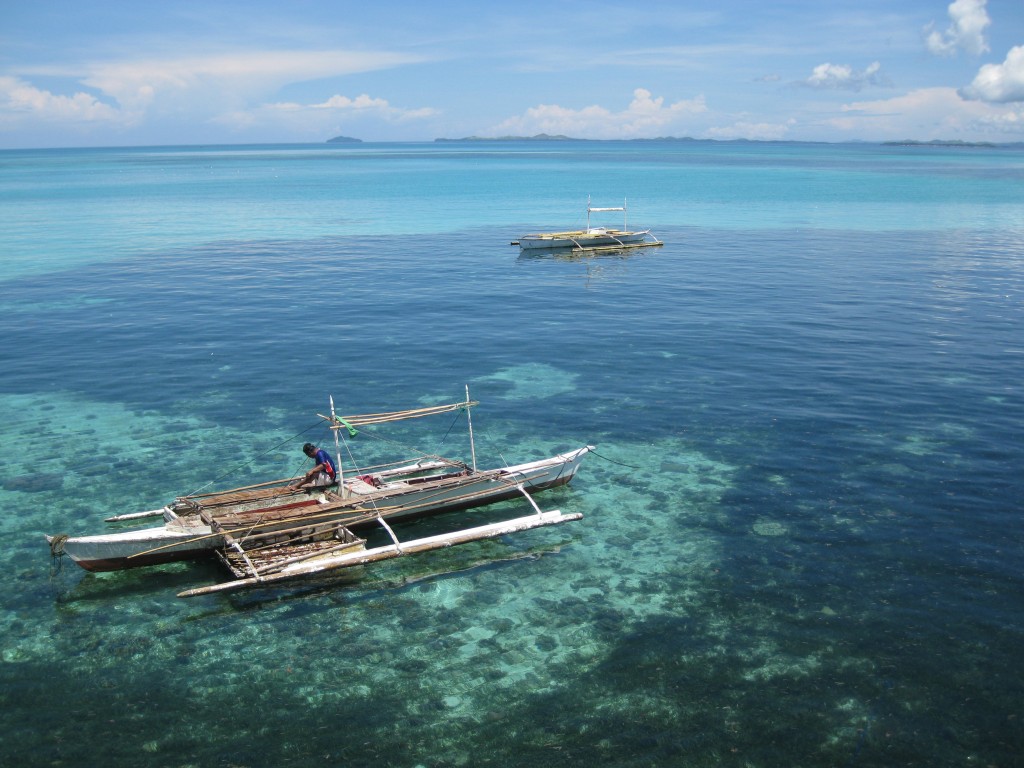
Both because the process of seaweed farming confounded me and because I wanted to try my hand at collecting washed-out seaweed, we organized a trip to the seaweed farm.
We drove thirty minutes in a small banca, a boat with two pontoons on either side to steady its narrow hull, northwest to the seaweed farms. The water was crystalline –– sparkling turquoise above sandy bottoms, a dark, rich blue when the seafloor was deep and rocky. The tiny farmhouses, which appeared in a line on the horizon, came into view and I could start to make out the shapes of people hunched in the shade, working.
We entered one farmhouse and watched the people inside. They were in the process of attaching little clumps of seaweed that had just been harvested to new lines of blue plastic straw. Each little bunch is tied six inches apart on a cord that is eleven meters long and stretches between two underwater polls. The lines are then placed about a foot apart; an average plot will have 50 or so lines. Every month or two, the farmer decides whether or not to split the crop –– attaching half of it to new lines and thereby doubling the crop’s size –– or to harvest and sell it.
The people worked quickly and barely looked up as we emerged atop the bamboo ladder that led from the boat to the house. The floor was completely covered with seaweed, and I wondered where all eight workers slept at night.
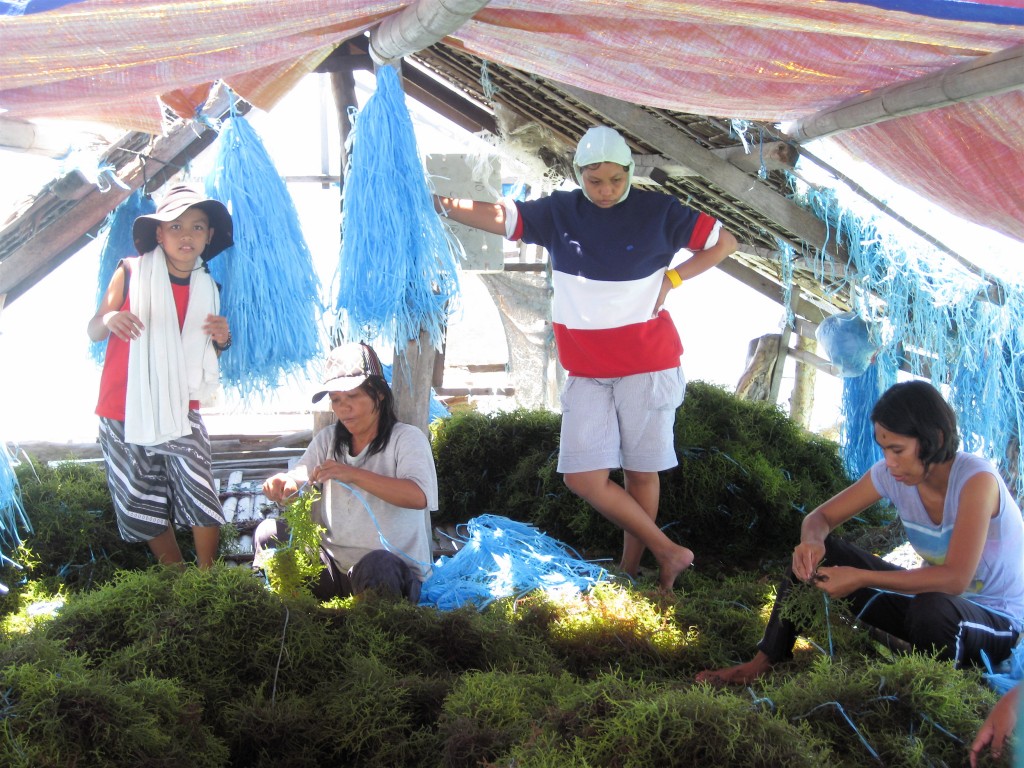
After a picnic lunch on the boat, followed by a few glasses of tuba, a mild wine made from the flowers of coconut palms, I decided to try gathering washed-out seaweed. I thought it would be easy enough: I’m a decent swimmer, and I only had to dive down a few feet to gather it. But the endeavor was both more tiring and less lucrative than I anticipated. The current was strong –– seaweed flourishes in fast water –– and seemed to push me away every time I reached toward a large clump. The optical magnification of the water also resulted in disappointment, as a a handful that appeared substantial underwater proved small and limp when brought to the surface. The seaweed stuck to the rocks with more vigor than I expected, and sometimes took quite a tug to pull loose.
After thirty minutes my lungs felt thoroughly stretched from repeatedly holding my breath, and between the three of us we’d only filled one-third of a burlap sack. Once dried, it would weigh about 1 kg ––meaning that I had just earned 24 cents for a very tiring half-hour of work. Still, because many families live on one dollar a day or less, I could see how gleaning seaweed provides a viable income.
That afternoon we laid out the seaweed on a small piece of cement to dry, and as it heated up I could see my efforts shrinking as the moisture left the plant. The odor drifted toward me in the sticky heat of the afternoon and I smiled down at my flip-flopped feet as I imagined my seaweed being used to make someone else’s shoes.
